skip to main |
skip to sidebar





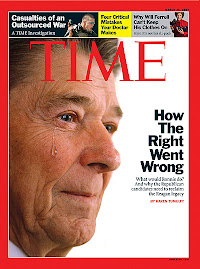
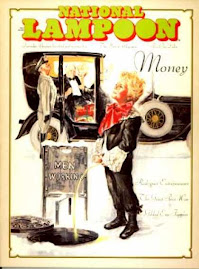


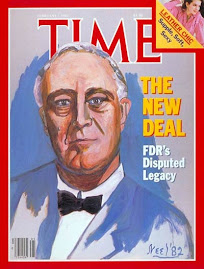


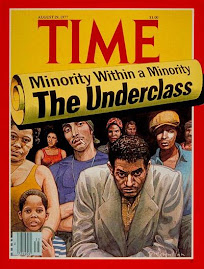


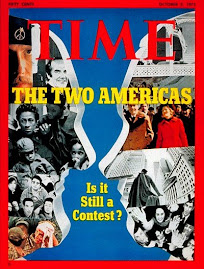
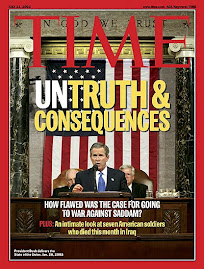

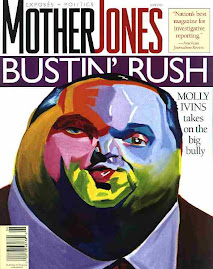
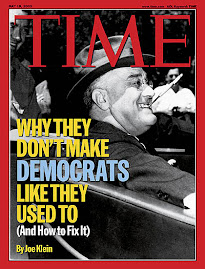
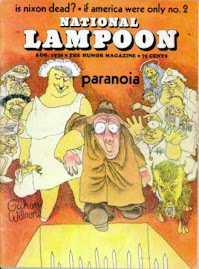




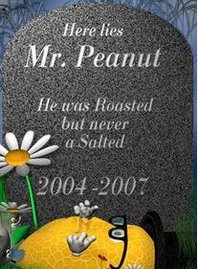
Visit 5 Sky Blue Acres...

Blog Archive
-
►
2015
(1)
- ► 05/03 - 05/10 (1)
-
►
2011
(282)
- ► 08/28 - 09/04 (1)
- ► 08/07 - 08/14 (1)
- ► 06/12 - 06/19 (1)
- ► 06/05 - 06/12 (2)
- ► 05/15 - 05/22 (2)
- ► 05/08 - 05/15 (4)
- ► 05/01 - 05/08 (6)
- ► 04/24 - 05/01 (8)
- ► 04/17 - 04/24 (4)
- ► 04/10 - 04/17 (9)
- ► 04/03 - 04/10 (9)
- ► 03/27 - 04/03 (9)
- ► 03/20 - 03/27 (13)
- ► 03/13 - 03/20 (19)
- ► 03/06 - 03/13 (20)
- ► 02/27 - 03/06 (43)
- ► 02/20 - 02/27 (31)
- ► 02/13 - 02/20 (27)
- ► 02/06 - 02/13 (12)
- ► 01/30 - 02/06 (14)
- ► 01/23 - 01/30 (7)
- ► 01/16 - 01/23 (18)
- ► 01/09 - 01/16 (15)
- ► 01/02 - 01/09 (7)
-
►
2010
(106)
- ► 12/26 - 01/02 (4)
- ► 12/19 - 12/26 (2)
- ► 12/12 - 12/19 (1)
- ► 12/05 - 12/12 (7)
- ► 11/28 - 12/05 (6)
- ► 11/21 - 11/28 (7)
- ► 11/14 - 11/21 (5)
- ► 11/07 - 11/14 (1)
- ► 10/31 - 11/07 (4)
- ► 10/17 - 10/24 (2)
- ► 10/03 - 10/10 (4)
- ► 09/26 - 10/03 (1)
- ► 09/19 - 09/26 (1)
- ► 09/12 - 09/19 (1)
- ► 09/05 - 09/12 (2)
- ► 08/22 - 08/29 (1)
- ► 08/15 - 08/22 (2)
- ► 08/08 - 08/15 (1)
- ► 07/11 - 07/18 (1)
- ► 07/04 - 07/11 (2)
- ► 06/20 - 06/27 (2)
- ► 06/13 - 06/20 (1)
- ► 06/06 - 06/13 (1)
- ► 05/30 - 06/06 (2)
- ► 05/16 - 05/23 (1)
- ► 05/09 - 05/16 (2)
- ► 05/02 - 05/09 (3)
- ► 04/25 - 05/02 (1)
- ► 04/18 - 04/25 (1)
- ► 04/11 - 04/18 (3)
- ► 04/04 - 04/11 (2)
- ► 03/28 - 04/04 (2)
- ► 03/21 - 03/28 (1)
- ► 03/14 - 03/21 (2)
- ► 03/07 - 03/14 (3)
- ► 02/28 - 03/07 (2)
- ► 02/21 - 02/28 (2)
- ► 02/14 - 02/21 (2)
- ► 02/07 - 02/14 (2)
- ► 01/31 - 02/07 (3)
- ► 01/24 - 01/31 (3)
- ► 01/17 - 01/24 (4)
- ► 01/10 - 01/17 (2)
- ► 01/03 - 01/10 (4)
-
►
2009
(167)
- ► 12/27 - 01/03 (5)
- ► 12/20 - 12/27 (4)
- ► 12/13 - 12/20 (4)
- ► 12/06 - 12/13 (3)
- ► 11/29 - 12/06 (4)
- ► 11/22 - 11/29 (3)
- ► 11/15 - 11/22 (4)
- ► 11/08 - 11/15 (3)
- ► 11/01 - 11/08 (5)
- ► 10/25 - 11/01 (4)
- ► 10/18 - 10/25 (5)
- ► 10/11 - 10/18 (1)
- ► 09/27 - 10/04 (3)
- ► 09/20 - 09/27 (4)
- ► 09/13 - 09/20 (4)
- ► 09/06 - 09/13 (6)
- ► 08/30 - 09/06 (5)
- ► 08/23 - 08/30 (1)
- ► 08/16 - 08/23 (2)
- ► 08/09 - 08/16 (6)
- ► 08/02 - 08/09 (1)
- ► 07/26 - 08/02 (1)
- ► 07/19 - 07/26 (2)
- ► 07/12 - 07/19 (3)
- ► 07/05 - 07/12 (2)
- ► 06/28 - 07/05 (3)
- ► 06/21 - 06/28 (3)
- ► 06/14 - 06/21 (3)
- ► 06/07 - 06/14 (4)
- ► 05/31 - 06/07 (6)
- ► 05/24 - 05/31 (6)
- ► 05/17 - 05/24 (5)
- ► 05/10 - 05/17 (5)
- ► 05/03 - 05/10 (5)
- ► 04/26 - 05/03 (5)
- ► 04/19 - 04/26 (7)
- ► 04/12 - 04/19 (3)
- ► 04/05 - 04/12 (5)
- ► 03/29 - 04/05 (2)
- ► 03/22 - 03/29 (4)
- ► 03/15 - 03/22 (1)
- ► 03/01 - 03/08 (1)
- ► 02/22 - 03/01 (1)
- ► 02/15 - 02/22 (1)
- ► 02/08 - 02/15 (2)
- ► 02/01 - 02/08 (5)
- ► 01/25 - 02/01 (2)
- ► 01/18 - 01/25 (2)
- ► 01/04 - 01/11 (1)
-
►
2008
(448)
- ► 12/28 - 01/04 (6)
- ► 12/21 - 12/28 (7)
- ► 12/14 - 12/21 (8)
- ► 12/07 - 12/14 (8)
- ► 11/30 - 12/07 (7)
- ► 11/23 - 11/30 (7)
- ► 11/16 - 11/23 (9)
- ► 11/09 - 11/16 (5)
- ► 11/02 - 11/09 (7)
- ► 10/26 - 11/02 (13)
- ► 10/19 - 10/26 (21)
- ► 10/12 - 10/19 (20)
- ► 10/05 - 10/12 (18)
- ► 09/28 - 10/05 (13)
- ► 09/21 - 09/28 (15)
- ► 09/14 - 09/21 (10)
- ► 09/07 - 09/14 (10)
- ► 08/31 - 09/07 (13)
- ► 08/24 - 08/31 (11)
- ► 08/17 - 08/24 (7)
- ► 08/10 - 08/17 (4)
- ► 08/03 - 08/10 (7)
- ► 07/27 - 08/03 (7)
- ► 07/20 - 07/27 (9)
- ► 07/13 - 07/20 (1)
- ► 07/06 - 07/13 (5)
- ► 06/29 - 07/06 (9)
- ► 06/22 - 06/29 (6)
- ► 06/15 - 06/22 (7)
- ► 06/08 - 06/15 (7)
- ► 06/01 - 06/08 (12)
- ► 05/25 - 06/01 (12)
- ► 05/18 - 05/25 (15)
- ► 05/11 - 05/18 (9)
- ► 05/04 - 05/11 (11)
- ► 04/27 - 05/04 (4)
- ► 04/20 - 04/27 (5)
- ► 04/13 - 04/20 (3)
- ► 04/06 - 04/13 (5)
- ► 03/30 - 04/06 (4)
- ► 03/23 - 03/30 (4)
- ► 03/16 - 03/23 (10)
- ► 03/09 - 03/16 (10)
- ► 03/02 - 03/09 (8)
- ► 02/24 - 03/02 (7)
- ► 02/17 - 02/24 (12)
- ► 02/10 - 02/17 (6)
- ► 02/03 - 02/10 (14)
- ► 01/27 - 02/03 (4)
- ► 01/20 - 01/27 (7)
- ► 01/13 - 01/20 (5)
- ► 01/06 - 01/13 (4)
-
▼
2007
(1012)
- ► 12/30 - 01/06 (10)
- ► 12/23 - 12/30 (8)
- ► 12/16 - 12/23 (6)
- ► 12/09 - 12/16 (9)
- ► 12/02 - 12/09 (16)
- ► 11/25 - 12/02 (17)
- ► 11/18 - 11/25 (8)
- ► 11/11 - 11/18 (19)
- ► 11/04 - 11/11 (16)
- ► 10/28 - 11/04 (21)
- ► 10/21 - 10/28 (23)
- ► 10/14 - 10/21 (18)
- ► 10/07 - 10/14 (15)
- ► 09/30 - 10/07 (36)
- ► 09/23 - 09/30 (22)
- ► 09/16 - 09/23 (24)
- ► 09/09 - 09/16 (22)
- ► 09/02 - 09/09 (19)
- ► 08/26 - 09/02 (12)
- ► 08/19 - 08/26 (20)
- ► 08/12 - 08/19 (16)
-
▼
08/05 - 08/12
(15)
- Rupert Murdock's War On Journalism
- Speaking Republican - Made Easy
- "Republican" as a Second Language
- How To Speak Republican Quick Study Guide
- How To Speak Republican - Lesson 4
- How To Speak Republican - Lesson 3
- How To Speak Republican- Lesson 2
- How to Speak Republican - Lesson 1
- Poverty in America
- Hillary For President
- "Scope stops bad breath": It's The Marketing Stupid
- Hiroshima Survivor - Recalls First A-Bomb
- I-35 Bridge Collapse Info:
- Speaking of Failures.......
- Jack Bauer V. Global Warming
- ► 07/29 - 08/05 (11)
- ► 07/22 - 07/29 (17)
- ► 07/15 - 07/22 (8)
- ► 07/08 - 07/15 (7)
- ► 07/01 - 07/08 (12)
- ► 06/24 - 07/01 (23)
- ► 06/17 - 06/24 (15)
- ► 06/10 - 06/17 (20)
- ► 06/03 - 06/10 (16)
- ► 05/27 - 06/03 (26)
- ► 05/20 - 05/27 (21)
- ► 05/13 - 05/20 (27)
- ► 05/06 - 05/13 (18)
- ► 04/29 - 05/06 (31)
- ► 04/22 - 04/29 (28)
- ► 04/15 - 04/22 (19)
- ► 04/08 - 04/15 (33)
- ► 04/01 - 04/08 (23)
- ► 03/25 - 04/01 (20)
- ► 03/18 - 03/25 (22)
- ► 03/11 - 03/18 (19)
- ► 03/04 - 03/11 (6)
- ► 02/25 - 03/04 (18)
- ► 02/18 - 02/25 (23)
- ► 02/11 - 02/18 (29)
- ► 02/04 - 02/11 (26)
- ► 01/28 - 02/04 (26)
- ► 01/21 - 01/28 (31)
- ► 01/14 - 01/21 (32)
- ► 01/07 - 01/14 (33)
-
►
2006
(1474)
- ► 12/31 - 01/07 (38)
- ► 12/24 - 12/31 (32)
- ► 12/17 - 12/24 (39)
- ► 12/10 - 12/17 (32)
- ► 12/03 - 12/10 (61)
- ► 11/26 - 12/03 (39)
- ► 11/19 - 11/26 (16)
- ► 11/12 - 11/19 (16)
- ► 11/05 - 11/12 (37)
- ► 10/29 - 11/05 (41)
- ► 10/22 - 10/29 (20)
- ► 10/15 - 10/22 (14)
- ► 10/08 - 10/15 (15)
- ► 10/01 - 10/08 (14)
- ► 09/24 - 10/01 (21)
- ► 09/17 - 09/24 (24)
- ► 09/10 - 09/17 (21)
- ► 09/03 - 09/10 (22)
- ► 08/27 - 09/03 (26)
- ► 08/20 - 08/27 (36)
- ► 08/13 - 08/20 (27)
- ► 08/06 - 08/13 (30)
- ► 07/30 - 08/06 (19)
- ► 07/23 - 07/30 (27)
- ► 07/16 - 07/23 (44)
- ► 07/09 - 07/16 (29)
- ► 07/02 - 07/09 (24)
- ► 06/25 - 07/02 (18)
- ► 06/18 - 06/25 (26)
- ► 06/11 - 06/18 (13)
- ► 06/04 - 06/11 (10)
- ► 05/28 - 06/04 (27)
- ► 05/21 - 05/28 (6)
- ► 05/14 - 05/21 (9)
- ► 05/07 - 05/14 (36)
- ► 04/30 - 05/07 (24)
- ► 04/23 - 04/30 (39)
- ► 04/16 - 04/23 (50)
- ► 04/09 - 04/16 (44)
- ► 04/02 - 04/09 (35)
- ► 03/26 - 04/02 (57)
- ► 03/19 - 03/26 (32)
- ► 03/12 - 03/19 (21)
- ► 03/05 - 03/12 (22)
- ► 02/26 - 03/05 (30)
- ► 02/19 - 02/26 (36)
- ► 02/12 - 02/19 (29)
- ► 02/05 - 02/12 (33)
- ► 01/29 - 02/05 (27)
- ► 01/22 - 01/29 (33)
- ► 01/15 - 01/22 (26)
- ► 01/08 - 01/15 (14)
- ► 01/01 - 01/08 (13)
-
►
2005
(338)
- ► 12/25 - 01/01 (20)
- ► 12/18 - 12/25 (24)
- ► 12/11 - 12/18 (24)
- ► 12/04 - 12/11 (20)
- ► 11/27 - 12/04 (29)
- ► 11/20 - 11/27 (30)
- ► 11/13 - 11/20 (26)
- ► 11/06 - 11/13 (31)
- ► 10/30 - 11/06 (27)
- ► 10/23 - 10/30 (18)
- ► 10/16 - 10/23 (19)
- ► 10/09 - 10/16 (15)
- ► 10/02 - 10/09 (8)
- ► 09/25 - 10/02 (6)
- ► 09/18 - 09/25 (6)
- ► 09/11 - 09/18 (4)
- ► 09/04 - 09/11 (7)
- ► 08/28 - 09/04 (2)
- ► 08/21 - 08/28 (2)
- ► 08/14 - 08/21 (4)
- ► 07/31 - 08/07 (2)
- ► 07/24 - 07/31 (3)
- ► 07/17 - 07/24 (3)
- ► 06/12 - 06/19 (2)
- ► 05/29 - 06/05 (4)
- ► 05/22 - 05/29 (2)
E-mail us@ atbl1@yahoo.com

Daily Checks
- Wisconsin Watch
- Iowa Independent
- MinnPost
- Atlantic Monthly
- Progressive Populist
- The American Prospect
- Harpers
- The Progressive
- The New Republic
- The Hill
- On Line Journal
- Congress.org
- Power News
- Comedy Central
- Cap Times
- Wisconsin Eye
- Huffington Post
- Online Journal
- The Daily Beast
- Truth Dig
- DEMOS
- Common Dreams
- Democracy Journal
Local Government
- City Data Info
- City of New Richmond
- NR School District
- Wis Counties Asso
- St. Croix County
- Wis Towns Association
- Town of Richmond
- Town of Erin Prairie
- Town of Alden
- Town of Apple River
- Town of River Falls
- Town of Somerset
- League of Wis Municipalities
- Wis City/County Management Association
- Wis County Highway Association
TEA PARTY
Podcasts
- Blast The Right
- Progressive News Radio
- Best of the Left
- Mother Jones
- KCRW podcast links
- Democracy Now
- Counterspin (FAIR)
- On Point
- National Press Club
- Econ Talk
- London School of Economics
- London School of Econ
- Tax Policy Institute
- New York Public Library
- Center 4 Biological Diversity
- Dan Carlin Archives
- History Podcast Network
- LexisNexus
- Tree Hugger Radio
- LIME Podcast Guide
- Farm Feeds(podcasts)
- Headline Podcast (various)
- Podcast Directory
- Your Call Radio
- Military History
- VID: World Focus
- Harvard U Press
- Col. Journalism Review
- Princeton University Podcasts
- Open Culture
- Olin Lecture Library
- Economic Club of Washington DC
- U of Chicago Law School
- The Progressive Radio Show
- KTLK Radio
- Economics Podcast
- Commonwealth Club
- Pod Bean
- Bloomberg
- Von Mises Institute
- Foundation for Econ Ed
- Noam Chomsky
- Meditation
- Scientific American
- 360
- Here On Earth
- Ethical Corp
- Nature
- Speaking of Faith
- AEI Podcasts
- NPR Economics
- NPR Podcast directory
- Wis Public Radio
- Media Matters
- Out Loud Opinions
- Hillsdale College Podcasts
- C-Span Podcasts
- Free Speech TV
- Link TV
- Learn Out Loud
- Ring of Fire
- Reason TV
- To The Point (kcrw)
Big Farm Tracks
- Farmer To Farmer
- Natl Cattleman's Beef Asso
- Wis Campaign Finance Database
- Ag Links
- The Country Today
- Center for Rural Affairs
- Progressive Farmer
- Ag Periodicals
- CAFO Info
- Farm Feeds (podcasts)
- Open Congress
- Farm Policy Facts
- Amber Waves Of Grain Report
- The Country Today
- Farm Subsidy Database
- Media Matters Contribution Tracking
- Wis Farm Facts
- Carbon Capture Report
- St. Croix FB 2009 Newsletter
- St. Croix County Farm Bureau
- Wis. Farm Bureau
- American Farm Bureau
- Grist
- US Senate Lobbying Reports
- US House Lobbying Disclosure
Global Climate Change
Think Tanks
Health Care Debate
Sorting It Out...
- 1A: OnLine Journal
- BG: Fighting Bob
- BG: Free Democracy
- BG: Instapundit
- BG: One Wisconsin Now
- BG: Political Blog List
- BG: Red State Update
- BG: Talking Points Memo
- BG: The Moderate Voice
- BG: The Wheeler Report
- BG: Think Progress
- BG: Uppity Wisconsin
- BG: Wisconsin Politics
- Bi-wkly: High Country News
- COURT: Cornell Supreme Court Collection
- COURT: Landmark Supreme Court Cases
- COURT: Recent Supreme Court Decisions
- COURT: SCOTUSblog
- COURT: US Courts
- COURT: US Supreme Court
- ECON: American Manufacturing
- ECON: Baseline Scenario
- ECON: Data360
- ECON: Economic Web Journals
- ECON: Economics - About
- ECON: Fin Times Economists' Forum
- ECON: Free Buck
- ECON: Inflation Data
- ECON: Moody's Economy
- ECON: Perot Charts
- ECON: The Economist
- ECON: US Census Bureau
- ECON: WebEc
- ECON: WSJ Real Time Economics
- GV: Federal Budget
- GV: Gov't 101
- GV: JPN LINKS
- GV: Library of Congress
- GV: Lobbying in Wisconsin
- GV: State of Wisconsin
- GV: The Congressional Record
- GV: The White House
- GV: US Gov't Revenue
- GV: US Gov't Spending
- GV: Wis Democracy Campaign
- GV: Wis Grassroots Groups
- GV: Wis. Election Board
- GV: Wis. Gov't Accountability Board
- GV: Wisconsin Eye
- GV: Wisconsin State Legislature
- LG: 111th Senate Roll Call Votes
- LG: US Congress Roll Call Votes
- LG: US House Clrek
- LG: US Senate
- MD: Broadcasting & Cable
- MD: CNN Videos
- MD: Columbia Journalism Review
- MD: Common Dreams
- MD: Common Dreams
- MD: Fact Check
- MD: Freepress
- MD: Media Matters
- MD: News Busters
- MD: News Trust
- MD: Press Think
- Monthly: Democracy Journal
- NP: Capital Times/Wis State Journal
- NP: Christian Science Monitor
- NP: Grist
- NP: Milwaukee Journal Sentinal
- NP: Rivertown News
- NP: The CS Monitor
- NP: The Guardian
- NP: The New York Times
- NP: Time
- NP: Wall Street Journal
- NP: Washington Post
- On-line: Greater Good
- On-Line: Miller-McCune
- On-Line: Orion
- PR: AMerican Prospect
- PR: Daylife
- PR: Op Ed News
- PR: Politico
- PR: Real Clear Politics
- PR: Rollingstone
- PR: The Economist
- PR: The Progressive
- PR: The Progressive Populist
- PR: The Week
- PR: World Press
- PR:American Spectator
- RD: Democracy Now
- RD: Fresh Air Radio
- RD: National Public Radio
- RD: On Point
- RD: This American Life
- RD: Thom Hartmann Show
- RD: Wis Public Radio
- TV: American Experience
- TV: Bill MOyers
- TV: CSPAN
- TV: Frontine
- TV: Minnesota PUblic TV
- TV: PBS
- TV: Reason TV
- TV: Wisconsin Public TV
- WD: Center of Responsive Politics
- WD: Concord Coalition
- WD: Lobbying & Campaign Finance Links
- WD: Southern Poverty Law Center
- WD: Sunlight Foundation
- Weekly: Fortune
- Weekly: Newsweek
- Weekly: Progressive Populist
- Weekly: The Economist
- Weekly: The Nation
- Weekly: The Week Magazine
- Weekly: The Weekly Standard
- Weekly: Time
- WEEKLY: US News & World Report
- XYZ: Atheist Nexus
- XYZ: Biographical Dictionary
- XYZ: Census Scope
- XYZ: Encyclopedia
- XYZ: Grandfather Economic Report
- XYZ: Imprimis
- XYZ: Info Please
- XYZ: MORE Library System
- XYZ: Q & A the Wiki Way
- XYZ: Snopes
- XYZ: STATS
- XYZ: The Big Read
- XYZ: Wikipedia

Right Wing Flapping
- New Majority
- The Next Right
- BreaitBart TV, etc.
- Taki's Mag
- Shaun Hannity @ FOX News
- Fresh Conservative
- Red State Update
- True North
- Info Wars
- Obama Deception
- Operation Rescue
- National Right To Life
- American Family Association
- NRA
- Leadership Institute
- Eagle Forum
- CATO Institute
- Hertitage Foundation
- American Conservative Union
- Americans for Tax Refrom
- Newt Gingrich
- American Solutions
- World View Radio
- One News Now
- Americans For Properity
- One News Now
Misc Link Dump
- Democracy Journal
- About.Com: US Politics
- Alter Net
- Atlas of US Elections
- Bizzaro Comic
- Capital Times
- Comedy Central
- Democracy Now
- Fact Check
- Fight the Smears
- Fix Housing First
- FlipperTV
- Fresh Air Radio
- Funny Times
- Funny Times
- Institute of Wisconsin's Future
- Irregular State News - Wisconsin
- Just The Facts: Public Policy Inst.
- Liberal Values
- LINK TV
- Media Channel Links
- Media Matters
- Milwaukee Journal Sentinal
- National Enquirer
- On Point Radio
- On The Issues
- One Wisconsin Now
- Op Ed News
- Open Secets
- PoliticFact.com
- POLITICO
- Progressive Populist
- Real Clear Politics
- Robert Reich Blog
- Scientific Commons
- Snopes
- STATS
- Talking Points Memo
- TED
- The Walrus
- The Week
- Thom Hartmann Radio
- Uppity Wisconsin
- US Demographic Maps: Census Scope
- US Magazine
- Wash. Post Fact Checker
- Wisconsin Lawyer
- Wisconsin Online
- Wisconsin Vote
Payday Loans
- Americans For Fairness In Lending
- Article: alternative to payday loans
- Bus Week: The Poverty Business Issue
- CarMax news
- Center For Responsible Lending
- Consumer Action
- Consumer Federation of America
- Isthmus: Wis Business Taxes
- Lobbying in Wis.
- Payday Magazine
- Payday Pundit
- Reclaim Democracy
- Reclaim Democracy: Wis Business Taxes
- Stop Payday Predators
- Wis Coalition for Consumer Choice
- Wis. Citizen Utility Board
- Wis. Council on Children & Families
- Wis: Consumer Law Litigation Clinic
- wis: Nutritional Resource Center
- Wis: Student Public Interest Research Group
- Wis: Track Bill Lobbyists

Local Related
Sustainable Agriculture
All Politics Is Local
Wisconsin Geological History

NEWS: Local, State, National & Beyond
- JPN Links
- New Richmond News
- St. Croix Sierra Club
- L & P in Hudson WI
- New Richmond Forum
- City Town Info
- Surfwax
- Info Please
- C-SPAN Big Picture Links
- CNN Video
- Daylife
- Chales Lipson Links
- Internet Public Library
- Hudson Star-Observer
- Pierce County Herald
- River Falls Journal
- Dunn County News
- River Town Newspapers
- Wis. Politics News
- Isthmus
- The Capital Times
- NATIONAL NEWS LINKS
- C-Span
- National Media Resources
- National Blog Resources
- Google: Society
- INTERNATIONAL LINKS
- International News Links
- Wisconsin State Journal
- Milwaukee Journal
- Small Business Times
- Capitol Region Business Journal
- Milwaukee Business Journal
- St. Paul Pioneer Press
- Minneapolis Star Tribune
- US News Links
- Alertnet News
- Newsmax
- Google: Conservative
- News Busters
- Conservative News Links
Health Care
History
Voting Record Scorecards
- Open Congress
- Project Vote Smart - Hraychuck
- Project Vote Smart - Harsdorf
- Project Vote Smart - Rhoades
- Project Vote Smart - Murtha
- NARAL Legislative Scorecard
- Wis League of Conservation Voter's
- Natl Asso. of Manufacturers Vote Grid
- WMC Voting Records
- Vote Trust USA - Wis
- Fair Elections Wis.
- Wis. AFL-CIO
- WMC Voting Records
- Wic Women's Council
- Throw The Rascals Out
- WI Partisan Voter Index
- Metro Milwaukee Asso of Com
Environmental Watch Dogs

Wis. Campaign Finance Refrom

Research Wis. Legislature
- JPN's Info Links
- Common Sense Americanism
- Moneyed Politicians
- Throw The Rascals Out
- Wisconsin Interest
- Asso. of Wis. Lobbyists
- Answers.com
- Wis. State Ethics Board
- Financial Resources On Line
- City Data.com
- Open Secrets
- Wis. Democracy Campaign
- News Meat Contribution Search
- Wis. State Legislature
- Wis. Leg.: 2007 Bill History
- Wis. Leg.: Bills by subject
- Wis. Leg.: Bills by author
- Wis. Leg.: 2007 Bill History
- Wis. Leg.: Bills by subject
- Natl Conferenc of State Legislatures
- Wis. Institute of Policy Research
- Payday Loan Bills
- Community Financial Services Association of America
- Center for Responsible Lending
- Community Financial Services Association of America Community Financial Services Association of America

Wis. Political Lobbies (L) & Watch Dogs (WD) Alerts

Conspiracy Anyone?

More politcal reads
Save Darfur

Outdoors In Wisconsin


Election 2008

Blogs Of Interest



Local Music, Activities, Etc.
- Purgatory Creek
- Paddy Ryan's
- Wis. DNR
- Honky Tonk Cafe (River Falls)
- UW-River Falls
- Minnesota Bluegrass
- Greg Boyd's House of Fine Instruments
- How Was The Show?
- Pickin Up Stream
- St. Croix Off Broadway Theater
- Wild Fruit Folk Music: Local Schedule
- The Space (New Rcihmond)
- Gibby's Lanes
- The Zebra Mussels
- Alzen Family Band
- Pete Neuman & Real Deal
- Out Gallavantin
- Danger Rangers
- Duck For The Oyster
- Morgans Run (Bluegrass)
- Kathy Boyd & Phoenix Rising (B-grass)
- Willow River Saloon
- The Twisted Grille
- Cedar Cultural Center
- Pantages Theater

National News

The Koch Family

Local Blogs Of Interest
- St. Croix County Genealogy Site
- Denmark Socialists Invade USA 4 07 Vacation
- Wisconsin' Lefty Blogs
- New Richmond News Nuggets
- Area Voices
- 5 Sky Blue Acres
- Inspirational Shoes
- The Guru Of Business
- Bring Back The Nap
- Oggtoons
- Unsightly Incompetence
- Uncommon Insight
- Progressive Messenger
- Craig Westover
- JPN's Info Links
- Life & Politics in Hudson, WI

Government Links

Childhood"s End...
There'll be war, there'll be peace.
But everything one day will cease.
All the iron turned to rust;
All the proud men turned to dust.
And so all things, time will mend.
So this song will end.
--Pink Floyd

Political Reads
- American Conservative
- Common Dreams
- Conservative USA Links
- Daily Kos
- Fact Check
- Media Matters
- Mother Jones
- New Left Review
- Right Wing News
- Salon
- The American Spectator
- The Nation
- The National Review
- The New Republic
- The New Statesman
- The Progressive
- The Weakly Standard
- Tom Paine
- Top 25 Progressive Links
- Yes! Magazine
The Music Scene
STUFF
- GIGA_USA
- Mag Cover Browser
- Metro Lyrics
- Wis Bird Photography
- Buzzword Generator
- Buzzwqord Generator 2
- Bullshit Generator
- More Buzzwords
- White Pages.com
- Amarxica
- Better World
- Modern MechanixCovers
- wiki How To
- The Insane Asylum
- Gratefulness
- Writer's Almanac
- Those Were The Days
- Today In Literature
- Today In Science
- Today In History
- This Week In History
- Big Labor
- Truth Dig
- Tom Dispatch
- Alter Net
- Counter Currents
- Wis Democracy Campaign
- Fact Check.Org
- Total News
- Various News Links
- International News Links
- World News Links
- Washington Post
- NY Times
- Christian Science Monitor
- Op Ed News
- dudehisattva
- Better World

Up To The Minute Video News
Paradox...

Right Media "Watchdogs"
- News Busters
- Media Transparency
- List of groups
- Tyndall Report
- Project Censored
- News Watch
- National Coalition Against Censorship
- Media Channel
- Fairness and Accuracy in Reporting
- Environmental Media Services
- The Benton Foundation
- Alternet.org
- Accuracy in Media (AIM)
- Rocky Mountain Media Watch
- Media Research Center
Actual Media Watchdogs
Political Watchdogs
News: Local 2 Global
Wisconsin News Sources
RESEARCH LINKS
- Energy Administration Agency (Statistics)
- Nat'l Center for Policy Analysis
- Articles Data Base
- Wis. Legislature Site
- Economic History Encyclopedia
- Rivertown Election Links
- Wis Political Organizations
- RF Library: Voter Information Resources
- Info Shop
- Political Economy Research Institute
- JPN's INFO LINKS (local, state, federal)
Environmental
- St. Croix Sierra Club
- The Nelson Institute
- Culture Change
- Mindfully
- Tree Hugger
- Environmental Blog Roundup
- Environmental Working Group
- Environmental Science & Engineering
- Compost
- In Business
- BioCycle
- Living Room
- Earth Light
- Resurgence
- Green Teacher
- Natural Life
- Environmental Protection Online
- Earth First! Journal
- People & the Planet
- Conscious Choice
- The Green Guide
- Yes!
- Canadian Geographic
- Environmental Data Services
- The Ecologist
- E - The Environmental magazine
- Grist
- Nature
- Heavens Above (Night sky tracker)
- Sun Magazine
- Orion Magazine
- Sierra Magazine
- Environmental Science & Engineering
- Compost
- In Business
- BioCycle
- Living Room
- Earth Light
- Resurgence
- Green Teacher
- Natural Life
- Environmental Protection Online
- Earth First! Journal
- People & the Planet
- Conscious Choice
- The Green Guide
- Yes!
- Canadian Geographic
- Environmental Data Services
- The Ecologist
- E - The Environmental magazine
- Grist
- Nature
- Heavens Above (Night sky tracker)
- Environmental Blog Roundup
Business, Ethics & Responsibility
- Asian Business Strategy
- Bioethics Institute
- Christian Ethics Today
- Columbia Journalism Review
- Corporate Responsibility Officer Magazine
- Cyrano's Journal.com
- Ethical Corporation
- Ethics Daily
- Hispanic Business
- Islamic Ethics
- Out Sourcing World
- Outsource
- Progressive Living
- The Black Business Journal
- Various Business Ethics Sources
Taxes
Economics
Education
Labor
Agriculture
Science
Ethanol
Climate Change
Religion
Politics: Left
- Carpetbagger Report
- Counter Punch
- Rational Revolution
- About US Liberals
- Thom Hartmann
- Bad Subject Political Links
- Correntwire links
- People's Weekly World
- In These Times
- New Labor Forum
- Tom Paine
- Sojourners
- Commonweal
- Know Your Right Wing Speaker
- ACORN
- Common Dreams
- Counter Currents
- Links to Progressive America
- Monthly Review
- Mother Jones
- Op Ed News
- Rolling Stone
- Socialism & Liberation
- The American Prospect
- The Nation
- The New Republic
- The Progressive
- Top 25 Progressive Links
- Z Magazine
Politics: Moderate
Politics: All Over The Road
Politics: Right
- Stormfront: David Duke & Don Black KKK'ers
- David Duke
- Conservative Grassroots Network
- Republican Sex Scandals
- Anti-Gov. Handbook
- Wall Street Journal
- News Busters
- Conservative Links
- KTLK 100.3 FM
- Wis. Policy Research Institute
- Public Interest Watch
- Discover The Networks
- John Birch Society
- JBS Conservative Link
- The New American (JBS)
- The Quotable Von Mises
- Family Security Matters
- Free Market News
- Town Hall
- The American Conservative
- Conservative Web Watch
- Wisconsin Conservative Digest
- The Conservative Digest Weekly
- The Weekly Standard
Podcasts
Etc. Magazines
Misc...
Gone To His Eternal Roasting Place



3 comments:
Many (not all, but many) of those below the poverty line could not only hang on but actually pull themselves up and over it by giving up the socially destructive behaviors that put them there in the first place.
Sociologists tell us that young people who graduate from high school, don't have children out of wedlock, and get married before they do start building families are far, far less prone to ending up poor and/or on welfare. The number married couples with children living in poverty is quite small when compared to the number of single mothers with children in poverty. Study after study shows that children raised in a traditional nuclear family are far more likely to be well adjusted and cared for, do better in school, and live above the poverty line.
The real problem for society is figuring out how to break the cycle of socially destructive behaviors, which often passes from one generation to the next as children pattern their lives after their mother or the transient men in their mother's life. One thing the sociologists know for sure is that subsidizing socially destructive lifestyles not only doesn't work, it usually makes matters worse.
ON a positive note, the 1996 Welfare Reforms have been extremely successful in getting people permanently off of welfare. The fact is, Welfare Reform is one of the biggest social policy success stories of the past 50 years.
Some of what you say is true but
I'll bet you didn't go the the website at the end of this video because you care more about your tax dollars than the working poor. If you had you could have read this:
The Working Poor in PovertyUSA
The U.S. Census Bureau defines poor families as those with cash incomes of less than $15,577 a year for a family of three—or $19,971 for a family of four. Yet many families with children have family members who work.(?)
Since 2000—the last year before unemployment began to rise–—the number of people in poverty has risen by 5.4 million. 2005 marked the first year since 1999 in which real median houshold income showed an annual increase, although medium earnings for individuals fell.
The number of people with no health insurance increased from 45.3 million in 2004 to 46.6 million in 2005.
The average amount by which poor people’s incomes fell below the poverty line was greater in 2005 than any other year since recordkeeping began in 1975. The average amount by which the poor fell below the poverty line was $8,125 per family in 2005.
A single parent of two young children working full-time in a minimum wage job for a year would make $10,712 before taxes—a wage $4,865 below the poverty threshold set by the federal government.†
Yup, the current Administration's policies are working wonders!
Below are figures from 2001 US Census Bureau statistics on reason people are below the poverty line.
TOTAL 13,715 100%
Ill/Disabled 3,861 28%
Retired 3,576 26%
Familyreasons 3,009 22%
Can't find work 280 2%
School/other 2,688 20%
Post a Comment